Best-Selling Honda Sedan Makes an Ideal Daily Commuter
The 2020 Civic is Honda’s best-selling passenger car and second best-selling model, coming in behind the CR-V crossover. The fact that in crossover SUV crazy America Honda’s second best-selling vehicle is a sedan is a testament to the Civic’s reputation and how Honda has developed and nurtured customer loyalty.

By carrying-over the styling, interior upgrades and enhanced driver safety technology from the refresh it went through in 2019, Honda has solidified the Civic as one of the best compact sedans on the market.
Two Engines; Two Transmissions
Honda gives drivers options of two four-cylinder engines and two transmissions for the front-wheel drive Civic sedan. The 2.0-liter non-turbo has a six-speed manual transmission standard, which helps squeeze-out 158 horsepower (hp) and 138 pound-feet (lb.-ft.) of torque. A continuously variable transmission (CVT) is optional.

For more power, but no third pedal, the turbocharged 1.5-liter delivers 174 hp and 162 lb.-ft. of torque mated to a CVT with paddle shifters. Clean Fleet Report recently drove the latter combination for a week, and came away feeling Honda has done a very good job delivering economy and spirited acceleration. Our take on the CVT is it is one of the best we have driven, but if the paddles shifted a bit crisper, and the CVT didn’t have artificial gear shifts to mimic a geared automatic, it would have been even better.
Running on 87 octane, the EPA rates the 2020 Honda Civic 1.5L at 30 mpg city/38 highway/33 combined. In 440 miles driving throughout Southern California, we averaged 34.2 mpg combined. Breaking that down a bit, three all-freeway runs with the adaptive cruise control set at 65 mph, returned these averages:
100 miles: 37.5 mpg
110 miles: 38.9 mpg
122 miles: 42.1 mpg
The variances are due to road undulations and, in the first two runs, brief periods of idling stuck in rush hour traffic. Our take-away is the Civic is fuel-wise any way you look at it, which your budget will appreciate. Fuel economy numbers reported by Clean Fleet Report are non-scientific and represent the reviewer’s driving experience. Your numbers may differ.
Note: If you opt for the 1.5L in the EX or EX-L trim, the fuel economy estimates increase to 32 city/42 highway/36 combined.
Getting To Know the Civic
The 1.5L turbo Civic Touring performed well, with the zero-to-60 times of 6.6 seconds, plenty for almost all driving situations. There are two driver selectable drive modes of Normal and Eco, with the best performance being when opting for normal and using the paddle shifters. The Civic can get-up-and-go when called on. During that hard acceleration is the only time you will know the engine is running, as it is quiet and smooth when highway cruising or in-town driving. When experimenting with the drive mode button, Eco is the best setting for fuel economy, but there is a reduction in performance and air conditioning function.

The 2,963-pound Civic handled calmly on the highway with a stable, confident ride. A tip of the hat to all car manufacturers for the handling and ride improvements in compact sedans over the past decade. The MacPherson strut front and multi-link rear suspensions were augmented by stabilizer bars front and rear. The electric power-assisted steering was a bit shy of ideal for highway road feel, but it is tuned perfectly for in-town driving. The 235/40 all-season tires, on 18-inch wheels, provided good traction with little tire slippage when cornering hard. Out on mountain roads, pushing hard led to mild body lean for the Civic which has a front to rear, 60/40 weight distribution. Stopping was solid with anti-lock brakes, electronic brake distribution, brake assist and ventilated front and solid rear discs.
Aerodynamically Efficient Exterior
Now in its 10th generation, (first launched in 1972), the 2020 Honda Civic is one of five sedans offered by Honda, joining the Accord, Clarity, Insight and Fit. You may hear comments, like I did, about the Civic looking to be about the same size as an Accord. This isn’t true, of course, but when comparing the new Civic to those of decades past, it certainly has grown in size.

Honda says the Civic, which went through full-scale wind tunnel testing, “was designed to have class-leading aerodynamic performance.” Design elements to reduce drag include molded under-panels for a nearly full underbody covering, narrower A-pillars, and flush-mounted glass for aerodynamic efficiency.
The side profile is sleek, and places the emphasis on low wind resistance for best aerodynamics. This is especially noticeable as the rear window’s “relaxed slope” leads to the short, power-operated trunk lid. Even the twin exhaust tips are neatly tucked away under the lower fascia, and the power, one-touch moonroof didn’t distract from the slippery exterior design.
The Civic Touring has a black-painted rear spoiler, black grille, fog lights with gloss black trim and LED headlights with a C- shaped daytime running light design. The body design doesn’t resort to any tricks such as unneeded cladding. Chrome is kept to a tasteful minimum, with delicate accents on the lower front and rear fascias, around the windows, door handles and the slightest strips on the heated and power outside mirrors. The 18-inch alloy wheels with gloss Shark Gray inserts gave the Civic a distinctive look.
Our Civic was painted in Cosmic Blue Metallic, with body color-keyed bumpers, shark fin antenna and power exterior mirrors. The Civic looks best in a dark color, with those choices being Molten Lava Pearl, Crystal Black Pearl, Rally Red and Modern Steel Metallic.
Interior Details
Climbing inside you get a feeling of modernity, but not at the expense of classic design. Clean Fleet Report’s Civic Touring had a welcoming light and dark gray interior, with a generous use of soft touch materials. The seats, shift knob and steering wheel are trimmed in leather, with the seats getting fabric inserts. The seats have ventilation holes, but they are not truly ventilated. The door panels and dash have faux metal inserts that looked pretty good. The driver and passenger seats are heated, and the driver gets eight-way and the passenger four-way power adjustments, with well-padded thigh bolsters. The tilt and telescoping steering column has good range so the driver has plenty of options to find a comfortable driving position.

One of the best features on the Civic is the camera, strategically placed under the right side of the exterior mirror. This camera activates whenever the right turn signal is applied, and the screen shows what is to the right, and behind the car. This makes right hand turns quite a bit easier and is a feature we would like to see on all cars, crossovers and trucks.
The rear seats are made for grown-ups, holding two comfortably, but three for short jaunts. The padding on the center rear seat, which is divided by a fold down armrest with cup holders, is a bit over-stuffed, so that third adult may not want to be sitting there too long. For the outboard passengers, the heated seats have excellent leg room and, except for the tallest, the headroom is ample.

For storage, the rear seat folds 60/40 to provide a large and accommodating cargo space that rivals some midsize sedans. The trunk opening is tall and wide, with a low sill, making loading items easy. Overall, the interior build and material quality are at a high level, with soft surfaces on the dash and door panels, and a low profile dash aiding in good forward vision.
The cockpit design is driver-friendly, with digital and analog gauges, and a 7.0-inch, high-resolution color touchscreen. Only the base Civic LX gets a 5.0-inch LCD screen. The Civic Touring screen housed the navigation and the premium audio system that powered-out 450 watts through 10 speakers for the HD radio, SiriusXM, Apple CarPlay, Android Auto and USB audio interface. The Bluetooth with voice recognition worked very well, as did the steering wheel mounted and illuminated audio controls. A couple of minor concerns are that the audio system lacked a channel selection knob (which would have accompanied the volume knob), and it needed more channel pre-sets, both of which would make the system more user-friendly, convenient and would aid driver safety.
Safety and Convenience
All Civic models come standard with active and passive safety features such as front and side air bags with rollover sensors, and Honda Sensing, Honda’s advanced driver assistance systems (ADAS). Safety technologies include forward collision and road departure mitigation, lane keep assist, blind spot monitoring and adaptive cruise control. We thought the lane keep assist was too aggressive so we defeated it.

Additional safety and convenience features include remote keyless entry, a security system, push button start/stop, rain-sensing wipers, sliding center armrest, a tire pressure monitoring system, dual zone automatic climate control, remote engine start, an automatic dimming rearview mirror equipped with Homelink, wireless phone charger and an electric parking brake.
The 2020 Honda Civic is a Top Safety Pick from the Insurance Institute for Highway Safety (IIHS), while the US Government’s National Highway Traffic Safety Administration (NHTSA) has awarded it the highest rank of a Five Star rating.
Pricing and Warranties
The 2020 Honda Civic sedan comes in four trim levels with a choice of engines and transmissions. All prices are before options, but include the $955 destination charge.
LX 2.0L Six-speed manual $20,805
LX 2.0L CVT $21,605
Sport 2.0L Six-speed manual $22,505
Sport 2.0L CVT $23,505
EX 1.5T CVT $24,755
EX-L 1.5T CVT $25,955
Touring 1.5T CVT $28,655

All 2020 Civic models come with these warranties.
- Powertrain – Five years/60,000 miles
- Basic – Three years/36,000 miles
- Anti-perforation – Five years/Unlimited miles
- Roadside Assistance – Three years/36,000 miles
Observations: 2020 Honda Civic 1.5L Touring
The quick take is the 2020 Honda Civic 1.5L Touring offers fun and reasonable performance in well-built compact sedan. The ride is accommodating, the cabin quiet, the fuel economy very respectable, and it is priced competitively. Our test car, which was fully optioned, came in comfortably under $30,000.
The Civic offers comfort for four, and the large rear seat passenger room makes attaching a rear-facing child car seat easy. The 15-cubic-foot trunk is larger than expected and will swallow-up gear for that long, fuel-efficient road trip. The full suite of ADAS are only available on the upper trim levels, but they are worth getting when specing-out your new Civic.

Built in North America (engine and transmission from America, final assembly in Canada), the Civic carries with it the well-earned reputation of Honda quality. Personal note: I own a 1997 Honda Civic EX with 178,500 miles, which I bought new. The engine hums like a sewing machine, and even with all those miles, still gets 30+ mpg and doesn’t burn or leak a drop of oil. I am sure you know someone with a similar Civic story.
As the best-selling compact sedan on the market, Honda gives Civic buyers a choice of a coupe, sedan and hatchback, something not found with any other manufacturer in this category. Toss in the engine and transmission choices, and Honda makes a good case for a Civic to be sitting in your driveway. But don’t think Honda will be complacent, as, to name a few, the Toyota Corolla, Nissan Sentra, Hyundai Elantra, Mazda3, Kia Forte and the Volkswagen Jetta are all coming fast from behind, some with hybrids that best the great Honda mileage.
Make sure to opt-in to the Clean Fleet Report newsletter (top right of page) to be notified of all new stories and vehicle reviews.
Whatever you end up buying, Happy Driving!
Story & photos by John Faulkner (some photos supplied by the manufacturer)
Related Stories You Might Enjoy—The Compact Competitors
Road Test: 2020 Toyota Corolla Hybrid
Road Test: 2019 Toyota Corolla
First Drive: 2016 Nissan Sentra
News: 2021 Hyundai Elantra Hybrid Introduced
Road Test: 2019 Hyundai Elantra
Road Test: 2019 Kia Forte
Road Test: 2020 Volkswagen Jetta
Disclosure:
Clean Fleet Report is loaned free test vehicles from automakers to evaluate, typically for a week at a time. Our road tests are based on this one-week drive of a new vehicle. Because of this we don’t address issues such as long-term reliability or total cost of ownership. In addition, we are often invited to manufacturer events highlighting new vehicles or technology. As part of these events we may be offered free transportation, lodging or meals. We do our best to present our unvarnished evaluations of vehicles and news irrespective of these inducements.
Our focus is on vehicles that offer the best fuel economy in their class, which leads us to emphasize electric cars, plug-in hybrids, hybrids and diesels. We also feature those efficient gas-powered vehicles that are among the top mpg vehicles in their class. In addition, we aim to offer reviews and news on advanced technology and the alternative fuel vehicle market. We welcome any feedback from vehicle owners and are dedicated to providing a forum for alternative viewpoints. Please let us know your views at publisher@cleanfleetreport.com.

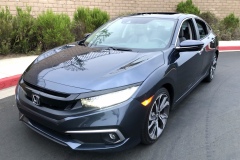


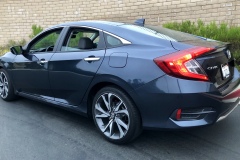
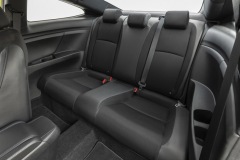
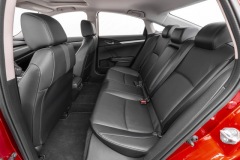
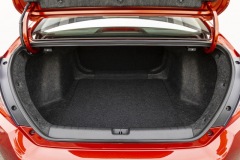
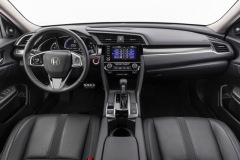
6 thoughts on “Road Test: 2020 Honda Civic Touring”